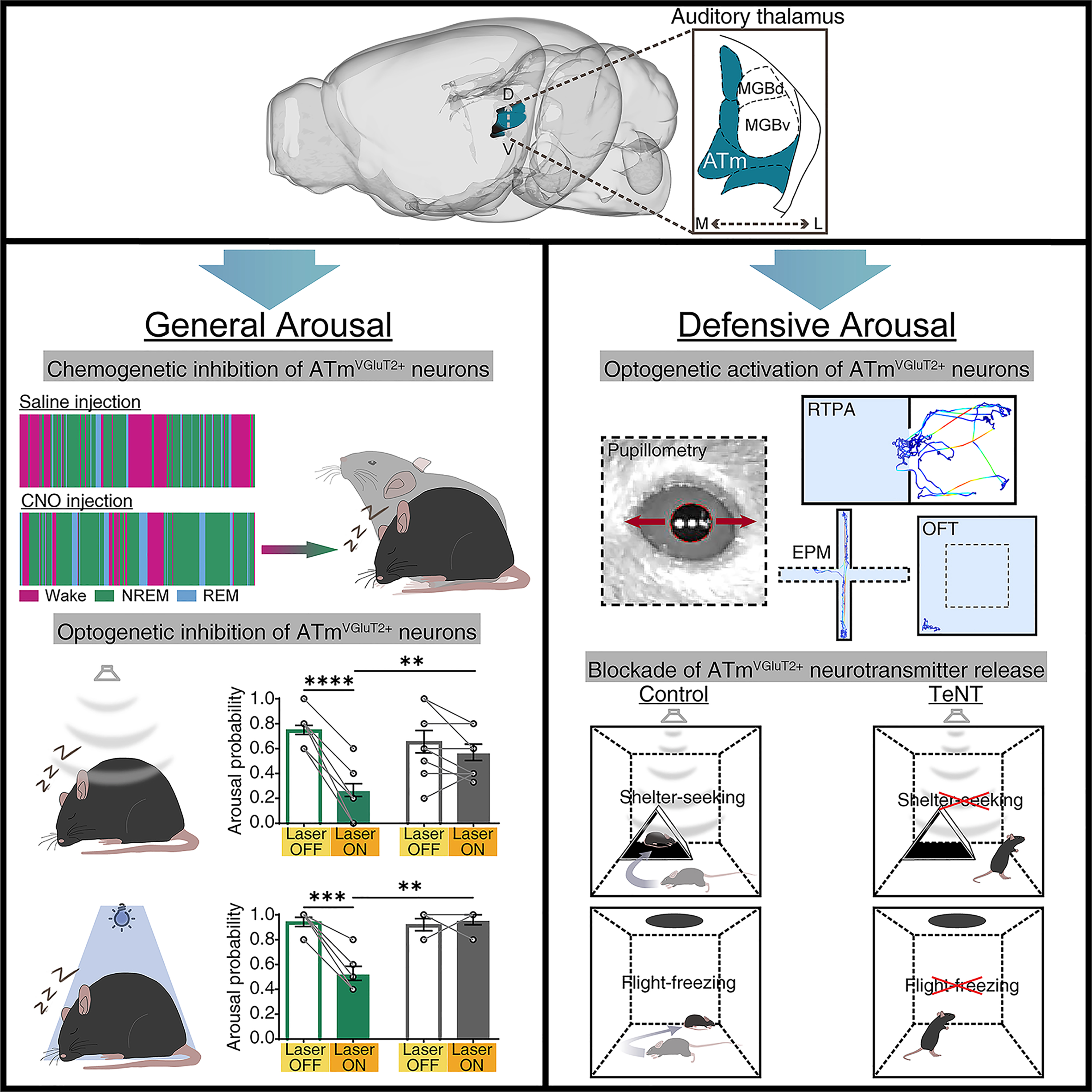Highlights
•Spontaneously active ATmVGluT2+ neurons help to maintain general arousal
•Sensory-evoked ATmVGluT2+ activity promotes NREM-wake transition
•ATmVGluT2+ activation induces defensive arousal in awake mice
•The expression of innate defensive behaviors requires ATmVGluT2+ activity
The expression of defensive responses to alerting sensory cues requires both general arousal and a specific arousal state associated with defensive emotions. However, it remains unclear whether these two forms of arousal can be regulated by common brain regions. We discovered that the medial sector of the auditory thalamus (ATm) in mice is a thalamic hub controlling both general and defensive arousal. The spontaneous activity of VGluT2-expressing ATm (ATmVGluT2+) neurons was correlated with and causally contributed to wakefulness. In sleeping mice, sustained ATmVGluT2+ population responses were predictive of sensory-induced arousal, the likelihood of which was markedly decreased by inhibiting ATmVGluT2+ neurons or multiple downstream pathways. In awake mice, ATmVGluT2+ activation led to heightened arousal accompanied by excessive anxiety and avoidance behavior. Notably, blocking their neurotransmission abolished alerting stimuli-induced defensive behaviors. These findings may shed light on the comorbidity of sleep disturbances and abnormal sensory sensitivity in specific brain disorders.

|
Paper Link: https://www.cell.com/neuron/fulltext/S0896-6273(23)00540-8
|
